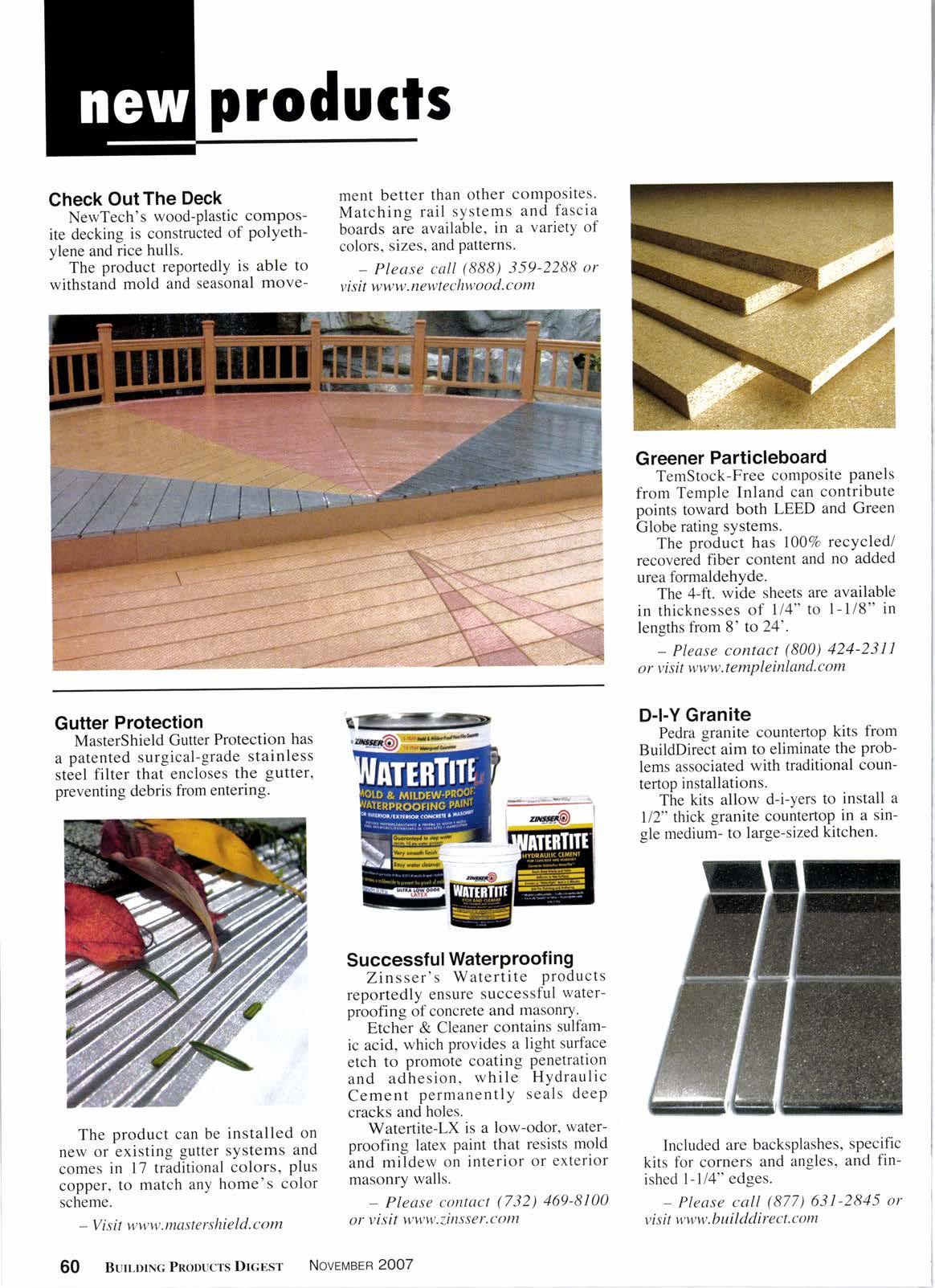
2 minute read
Housing woes push down western lumber output for first time in five years
A SWOON in U.S. home consrruc.lf.tion reduced western lumber production in 2006, the first decline in five years, according to final produc- tion figures prepared by Western Wood Products Association.
With housing starts decreasing by nearly 13Vo during the year, western lumber production slipped to 17.9g bilf ion bd. ft., down JVo from the previous year. The estimated wholesale value of the lumber was $6.8 billion. compared to $7.7 billion in 2005.
WWPA compiled the final industry totals for 2006 followine its annu_ al survey of more than 210 *illr oper- ating in the continental West and Alaska.
Oregon remained the largest lumber producing state in the co-untry and fared better than other western stales. Sawmills in Oregon produced 7.03 billion bd. ft. of lumber valued at $2.5 billion. The volume was down 5.42o from the previous year.
After reaching a 76-year high in 2005, lumber production in Washington declined l0.5Va to 5.13 billion bd. ft.-the steepest drop for all western states. The estimated wholesale value of the state's production was $1.gg billion.
Mills in California produced 2.59 billion bd. ft. valued at $1.19 billion in 2006, a 3.6Vo decrease from the year earlier.
Together, the three states comprised 82Vo of the region's lumber production.
In other western states. Idaho lumber production roraled 1.85 billion bd. ft., down 8.\Vo, and Montana finished 8.4Vo lower at 917 million bd. ft.
Production for South Dakota and
Wyoming in 2006 was 299 million bd. ft., and mills in the Four Corner states of Arizona, Colorado, New Mexico, and Utah produced 168 million bd. ft. Volumes in these states were combined to maintain the confi_ dentiality of individual mill dara.
Overall U.S. lumber consumotion totaled 60.47 billion bd. ft., down from the record 64.34 billion bd. ft. set in 2005. Housing starts dropped to 1.8 million for the year, reducing the volume of lumber used in new residential construction by nearly 167o. New home construction and reoair/ remodeling account tor j3Vo oi the lumber used annually.
Home building in the Sunbelt slowed more modestly than the rest of the country, helping mills in the South maintain production volumes. Southern sawmills produced 18.7 bilfion bd. ft.in20O6, down just 1.5Ta.lt was the first year in modern history that southern mills produced morl lumber than their counterparts in the West.
Lumber imports declined 7.6Vo to 22.8 billion bd. fr. Shipmenrs from Canada, the largest supplier to the U.S. market, were down 6.3Vo to 2O.l billion bd. ft.
WWPA represents lumber manu_ facturers in the 12 Western states and Alaska. Based in Portland, Or., the association compiles lumber industry statistics and provides business information services to mills, as well as quality standards, technical and product support services.
CITIRRED by the develoPment of Dne* products and the housing downturn, the product mix is shifting significantly in the $3 billion-a-year residential fence industry, according to a new study by PrinciPia Partners.
"The residential fence market consists of five major fence styles, including privacy, post and rail, chain link' ornamental, and Post and wire/wire mesh," noted Principia's Steve Van Kouteren. "The market can also be segmented by the four distinct material segments, including wood, metal, olastic and mineral-based or masonry materials. Wood and metal are the dominant materials used, accounting for over 7O7o of the total value."

Plastics are relatively new materials in the fence industry. The dominant plastic material is PVC or vinyl' which was introduced in the market in the late 1970s. Vinyl reached its product growth stage in the early 1990s' and iince this time, the demand for vinyl fence has steadilY grown. Market acceptance of vinyl fence varies by region from over 30Vo penettation to leis than 570 penetration. For example.










